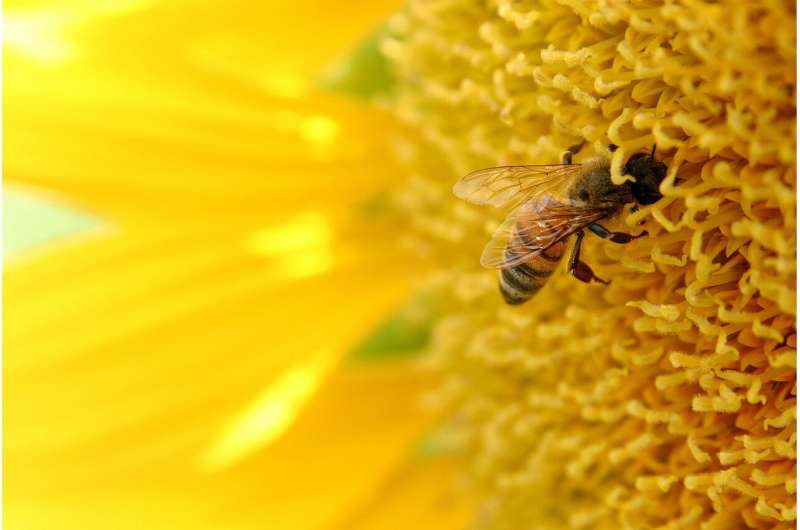Dive into the fascinating realm of bee vision and discover how these industrious pollinators perceive the world around them. Bees see a vibrant spectrum of colors, including ultraviolet wavelengths invisible to the human eye. Explore the evolutionary adaptations that have shaped bee vision and learn how this knowledge helps us understand the intricate relationship between flowers and their winged visitors. Bees and their remarkable visual capabilities are a testament to the wonders of the natural world.

Bees’ Vibrant Vision: Exploring the Spectrum Beyond Human Sight
As you read a children’s book about insects to your daughter, you discover a fascinating fact: bees see colors differently than humans do. This immediately piques your curiosity, and you set out to uncover the answers to your daughter’s questions: What colors do bees see, and how do we know?
Like many insects, bees can perceive a broader range of the light spectrum than humans. While our eyes can detect wavelengths from approximately 390 to 750 nanometers (nm), the bees’ vision spans from 300 to 650 nm. This means that bees cannot see the color red, but they can easily distinguish shades in the ultraviolet spectrum, which is invisible to us.
Bees’ enhanced visual capabilities are not just a curious fact; they play a vital role in the bees’ ability to navigate their environment and fulfill their essential role as pollinators. Their keen eyesight helps them identify and locate the vibrant, ultraviolet-patterned flowers that provide the nectar and pollen they rely on for sustenance.
Evolutionary Adaptations: How Bees’ Vision Has Shaped the Floral Landscape
The unique visual abilities of bees have not only influenced their own behavior but have also shaped the evolution of the flowers they pollinate. Over time, many flowering plants have developed distinctive ultraviolet color patterns that are invisible to humans but highly attractive to bees.
These patterns often serve as “landing zones,” guiding bees towards the nectar and pollen-rich parts of the flower. This mutually beneficial relationship has allowed both the bees and the plants to thrive, as the bees inadvertently transfer pollen from one flower to another during their foraging activities, enabling the plants to reproduce.
Researchers have long been fascinated by the intricacies of bee vision and have employed a variety of methods to uncover its mysteries. Behavioral experiments, in which bees are trained to associate specific colors with food rewards, have provided valuable insights into their color perception. Additionally, by studying the photoreceptors in bees’ eyes and their responses to different wavelengths of light, scientists have gained a deeper understanding of the inner workings of bee vision.
Through these innovative techniques, we have learned that bees can easily distinguish between dark and light shades, making them adept at identifying the edges and shapes of flowers. However, they may struggle to differentiate between smooth, similar shapes, such as circles and ovals. This knowledge helps us appreciate the unique visual world of bees and the remarkable adaptations that have evolved to support their role as vital pollinators.
Unlocking the Secrets of Bee Vision: Practical Applications and Future Discoveries
The insights gained from studying bee vision have practical applications that extend beyond our understanding of these fascinating insects. By learning how bees perceive their environment, we can apply this knowledge to develop more effective agricultural practices, enhance conservation efforts, and even improve human-made technologies.
For instance, the ultraviolet patterns that attract bees to flowers could inspire the design of more visually appealing and efficient solar panels, which could mimic the natural signaling mechanisms that draw bees to their nectar-rich targets. Additionally, understanding the bees’ ability to detect edges and shapes could inform the development of advanced robotic systems and navigational algorithms, allowing for more precise and efficient autonomous movements.
As we continue to unravel the mysteries of bee vision, the potential applications and implications only grow more fascinating. The vibrant world that bees inhabit offers a glimpse into the diversity of life on our planet and the remarkable adaptations that have evolved to support the delicate balance of nature. By embracing the unique perspectives of these industrious pollinators, we can gain a deeper appreciation for the complexity and beauty of the natural world, and perhaps even find inspiration to create a more sustainable future for all.
